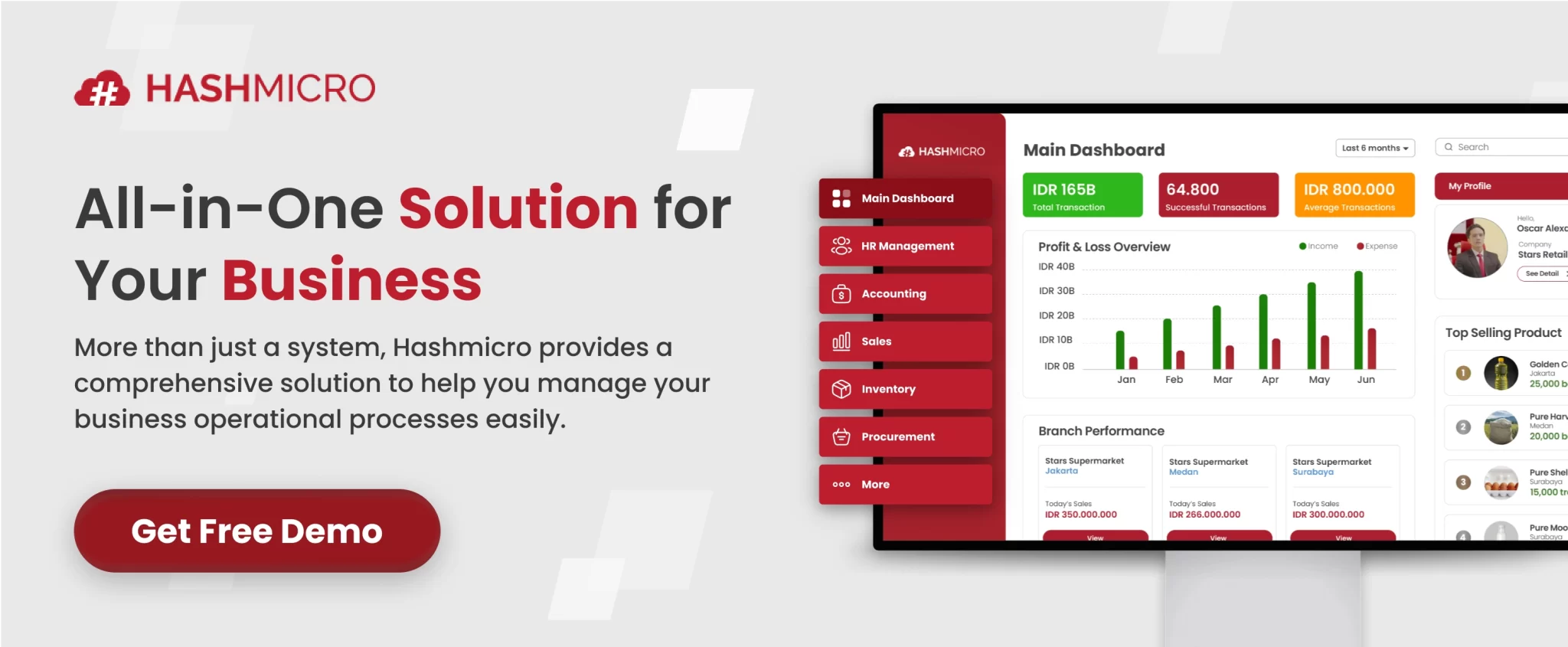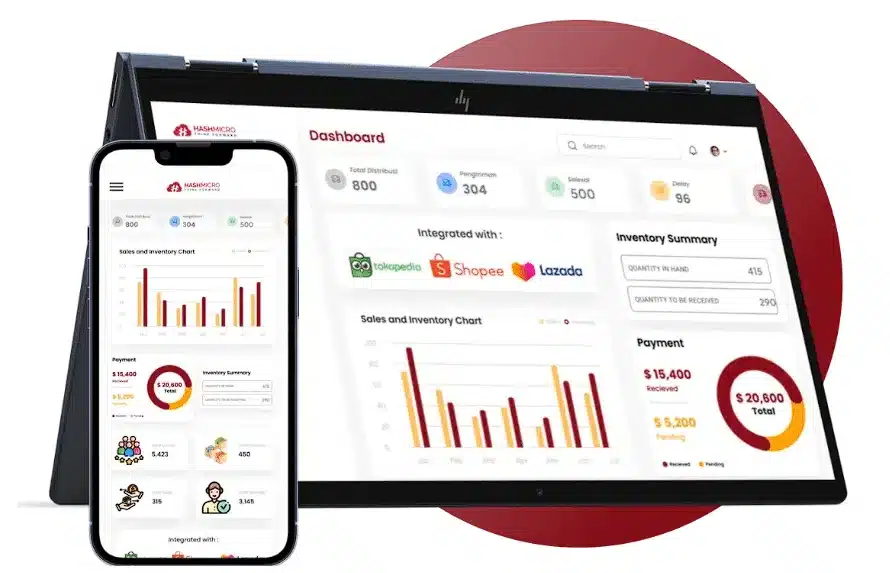In procurement, companies often need a way to quickly compare supplier prices. A Request for Quote (RFQ) helps by gathering detailed pricing and terms, enabling smarter and more efficient purchasing decisions.
Statista reports that over 70% of companies worldwide have reduced costs and expedited procurement cycles by digitizing processes such as RFQs. This shows that RFQs are more than just paperwork; they’re a core part of modern sourcing.
Still, managing RFQs manually can be slow and messy. HashMicro Procurement Software addresses this by automating requests, simplifying vendor evaluations, and ensuring that every transaction is well-documented.
This article explains what RFQs are and how businesses can implement them to maximize value from procurement.
Table of Content:
Table of Content

Key Takeaways
|
What is a Request for Quote (RFQ)?
A Request for Quote (RFQ) is a formal document used by businesses to solicit pricing details from suppliers. It works by providing vendors with clear specifications, allowing them to submit accurate quotes for comparison.
Beyond price collection, RFQs also help businesses evaluate terms, delivery timelines, and service conditions offered by suppliers. This structured approach enables procurement teams to make informed comparisons, minimize risks, and select the most cost-effective option.
How Does Request for Quote (RFQ) Work?
The RFQ process proceeds step by step to ensure companies receive the most competitive and reliable offers. Here’s a breakdown:
1. Identify needs
The process begins when a company recognizes the need for specific goods or services. At this stage, the procurement team defines the exact requirements, such as type of product, technical specifications, quantities, and delivery timelines.
2. Prepare the RFQ document
After identifying requirements, the team creates a quote request document. This includes detailed specifications, payment terms, submission deadlines, and any relevant compliance requirements. The more precise the document, the easier it is for suppliers to provide accurate quotes.
3. Send to selected vendors
The quote request is then distributed to a list of potential suppliers, usually those that have been pre-screened or trusted by the company. This step ensures that only qualified vendors participate, saving time and effort in the evaluation process.
4. Collect and review responses
Vendors respond with their proposals, typically including prices, delivery schedules, warranty details, and service options. The procurement team gathers all responses and organizes them for easier comparison and analysis.
5. Evaluate and shortlist
Each proposal is carefully assessed, not only on price but also on factors like product quality, supplier reputation, after-sales support, and reliability. This evaluation helps narrow down the best options that meet both budget and performance standards.
6. Choose the supplier
Finally, the company selects the supplier offering the best overall value. This decision ensures transparency, cost-effectiveness, and a stronger foundation for long-term vendor relationships.
Benefits of RFQ
Implementing a Request for Quote (RFQ) can deliver significant value to businesses, both in cost control and operational efficiency. The main benefits include:
1. Cost transparency
By requesting standardized quotes from multiple suppliers, companies gain a clear view of market pricing. This makes it easier to spot competitive offers and avoid overpaying for goods or services.
RFQs also support procurement spend analysis, providing companies with deeper insights into spending patterns and helping them identify areas where unnecessary costs can be reduced.
2. Fair vendor evaluation
Since all vendors respond to the same requirements, the comparison process becomes more objective and unbiased. Businesses can evaluate proposals based on price, quality, and terms without bias, ensuring the best-fit supplier is chosen.
3. Time and process efficiency
The structured nature of RFQs helps procurement teams save time in shortlisting suppliers. Instead of dealing with unstructured offers, they receive comparable data that speeds up decision-making and shortens the purchasing cycle.
4. Stronger negotiation power
Having multiple detailed quotes on hand gives companies leverage in negotiations. Procurement managers can use competing offers to secure better terms, extended warranties, or more favorable delivery conditions.
Through procurement spend analysis, companies can gain deeper insights into their purchasing patterns, identify cost-saving opportunities, and ensure budgets are allocated more strategically.
RFQ vs RFP
In procurement, companies often use different methods to source the best suppliers, with Request for Quote (RFQ) and Request for Proposal (RFP) being two of the most common.
While both are tools for engaging vendors, they serve different purposes depending on the business’s needs. An RFQ focuses more on pricing and clear specifications, whereas an RFP delves deeper into a vendor’s capabilities, strategies, and solutions.
To understand when to use each, it’s essential to recognize their distinct differences. Below is a comparison of RFQ and RFP:
| Aspect | RFQ (Request for Quote) | RFP (Request for Proposal) |
| Purpose | To collect price quotes for specific items. | To request detailed proposals and solutions. |
| Level of detail | Straightforward, with fixed specifications. | In-depth, including methods and strategies. |
| Use case | Best for standard goods or services. | Suitable for complex or customized projects. |
| Evaluation | Based mainly on cost and delivery terms. | Based on expertise, approach, and value. |
Best Practices for Creating RFQs
To maximize the effectiveness of RFQs, companies should follow these key practices:
1. Define requirements clearly
Be precise about specifications, quantity, quality standards, and delivery timelines. The more detail you provide, the less room for misinterpretation helping vendors deliver accurate and comparable quotes.
2. Use a standardized format
Provide a clear template for vendors to complete, particularly for pricing and terms. A consistent structure makes side-by-side evaluation easier and minimizes time wasted organizing unstructured data.
3. Select the right vendors
Limit RFQs to suppliers who are credible and capable of meeting your needs. Working with pre-qualified vendors increases the chances of receiving high-quality, realistic proposals.
4. Set transparent evaluation criteria
Explain how responses will be judged, such as by weighting price, quality, service, and delivery time. This not only ensures fairness but also encourages vendors to tailor their offers to what matters most for your business.
5. Ensure open communication
Give vendors the chance to ask questions and provide clarification before submission. Addressing concerns early reduces errors, builds trust, and creates a smoother procurement process overall.
Simplify RFQ Management with HashMicro Procurement
Implementing RFQs manually can be time-consuming and prone to errors, especially when dealing with multiple vendors. HashMicro Procurement Software helps businesses automate the entire process, from creating RFQs and sending them to suppliers to collecting responses and evaluating offers, all on one platform.
With real-time tracking and structured workflows, companies can save time, reduce costs, and ensure every procurement decision is transparent and data-driven.
Key features of HashMicro Procurement:
- RFQ (Request for Quotation) Management: Automate the creation and distribution of RFQs, collect vendor quotes in a structured format, and easily compare them to secure the best deal.
- Purchase Order Management: Simplify the creation, approval, and tracking of POs, ensuring every transaction is accurate and well-documented.
- Supplier Management: Maintain all supplier data in a single system, monitor performance, and foster stronger long-term relationships.
- Purchase Request Processing: Streamline purchase requests from submission to approval, making procurement faster and more transparent.
- Custom Approval Workflows: Design approval flows tailored to company policies, maintaining control and accountability at every stage.
- Real-time Reporting & Analytics: Gain instant insights into spending patterns and vendor performance with interactive dashboards and reports.
Conclusion
A Request for Quote (RFQ) is a structured method that enables businesses to collect and compare supplier quotes, making procurement decisions more transparent and cost-effective. Its importance lies in ensuring fair vendor evaluation, saving time, and reducing costs, especially when dealing with multiple suppliers.
HashMicro Procurement Software provides the perfect solution by automating RFQs, streamlining purchase orders, managing suppliers, and offering real-time analytics all in one integrated platform.
Ready to transform your procurement process? Request a free demo from HashMicro today and experience how automation can simplify RFQ management and boost efficiency for your business.
FAQ About RFQ
-
Is an RFQ the same as a tender?
Compared to other tendering methods, RFQs usually cover a smaller scope and mainly aim to secure goods or services at competitive prices.
-
Does RFQ or RFP come first?
An RFQ collects detailed pricing for specific products or services. Businesses that already know their exact needs often skip an RFI and move directly to an RFQ, which can be issued on its own or prior to an RFP.
-
How to send RFQ to vendor?
Before creating an RFQ document, the first step is to define your approach and clarify the requirements. Next, prepare the RFQ with detailed specifications and distribute it to selected vendors. Once the responses are received, review and compare the offers to choose the most suitable supplier. The final step is to close the process by agreeing on the terms and finalizing the contract.





















































